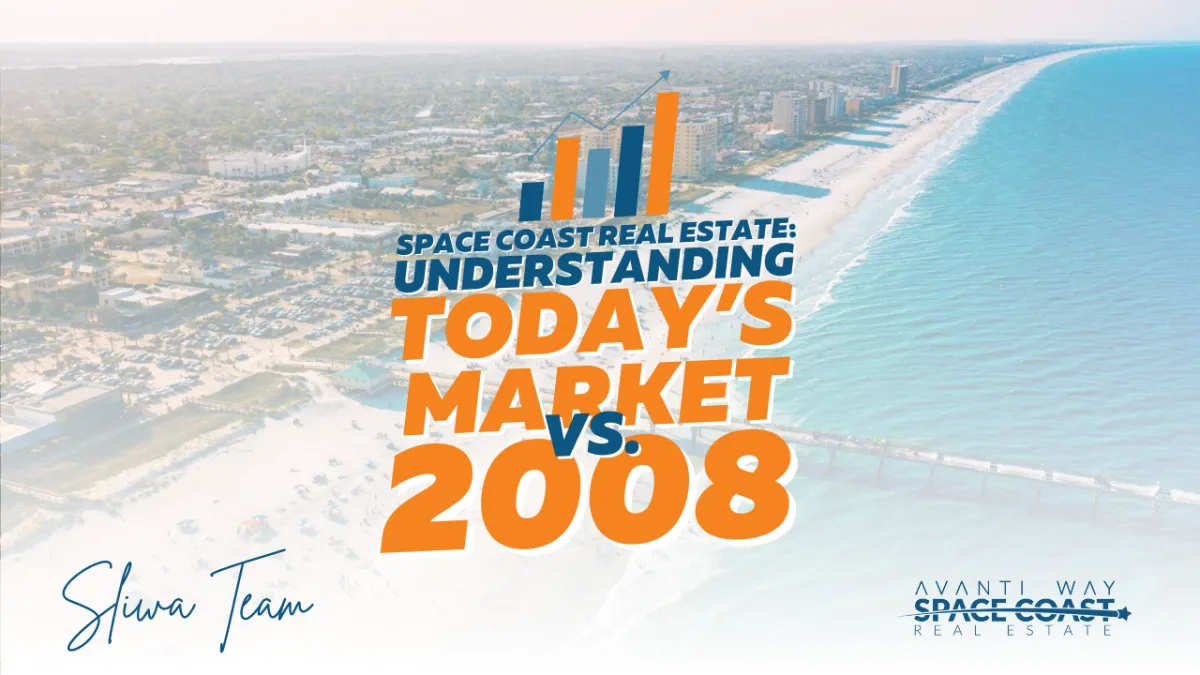BLOG

How Today’s Housing Inventory Differs from 2008: Insights for Satellite Beach Sellers
Space Coast Real Estate: Understanding Today's Market vs. 2008
Even if you didn't own a home during the 2008 housing crisis, you probably remember its impact. Many people worry about a similar event happening again. However, experts agree that today's market conditions are very different. As Business Insider notes:
“Though many Americans believe the housing market is at risk of crashing, the economists who study housing market conditions overwhelmingly do not expect a crash in 2024 or beyond.”
Here’s why experts are confident that we’re not heading for another crash. For home prices to plummet, there would need to be a significant oversupply of homes. Currently, there’s an undersupply, even with recent inventory growth. Housing supply comes from three main sources:
Homeowners deciding to sell their houses (existing homes)
New home construction (newly built homes)
Distressed properties (foreclosures or short sales)
When we examine these sources, it becomes clear that the situation today is vastly different from 2008.
Homeowners Deciding To Sell Their Houses
Although the supply of existing homes is up compared to last year, it remains low overall. Nationally, the current months’ supply is well below the norm and even further below what we saw during the 2008 crash. The graph below illustrates this clearly:
The latest data (in green) shows we have only about a third of the available inventory compared to 2008 (in red). This means there aren't enough homes available to cause prices to drop significantly. To repeat 2008, there would need to be a surplus of sellers and very few buyers, which isn't the case today.

New Home Construction
There’s been a lot of talk about new home construction, but concerns about overbuilding are unfounded. While new homes make up a larger percentage of total inventory than usual, builders are actually catching up from years of underbuilding rather than creating an oversupply.
The graph below uses data from the Census Bureau to show the number of new houses built over the last 52 years. The orange section shows overbuilding before the crash, while the red section indicates consistent underbuilding since then:

Builders remember the Great Recession well and have been cautious with their pace of construction. Bankrate explains:
“What’s more, builders remember the Great Recession all too well, and they’ve been cautious about their pace of construction. The result is an ongoing shortage of homes for sale.”
Distressed Properties (Foreclosures and Short Sales)
The third source of housing inventory is distressed properties. During the 2008 crisis, many foreclosures flooded the market due to lax lending standards. Today, lending standards are much stricter, resulting in fewer foreclosures and more qualified buyers.
The graph below, using data from ATTOM, shows the significant decrease in foreclosures since the crash:

As lending standards tightened and buyers became more qualified, the number of foreclosures dropped. The foreclosure moratorium and forbearance programs during the COVID-19 pandemic also prevented a wave of foreclosures. While foreclosure volume is ticking up, it’s still below normal levels.
What This Means for You
Inventory levels are far from where they need to be for a significant drop in prices or a market crash. Forbes explains:
“As already-high home prices continue trending upward, you may be concerned that we’re in a bubble ready to pop. However, the likelihood of a housing market crash—a rapid drop in unsustainably high home prices due to waning demand—remains low for 2024.”
Mark Fleming, Chief Economist at First American, points to the laws of supply and demand:
“There’s just generally not enough supply. There are more people than housing inventory. It’s Econ 101.”
Lawrence Yun, Chief Economist at the National Association of Realtors (NAR), adds:
“We will not have a repeat of the 2008–2012 housing market crash. There are no risky subprime mortgages that could implode, nor the combination of a massive oversupply and overproduction of homes.”
Bottom Line
The market doesn’t have enough available homes to trigger a repeat of the 2008 housing crisis. Inventory data and expert opinions consistently indicate that a crash is not on the horizon.
FAQs
Is the current housing market similar to 2008? No, today's market conditions are very different. There is an undersupply of homes, stricter lending standards, and more qualified buyers, unlike the oversupply and lax lending that led to the 2008 crash.
Will home prices drop in 2024? Experts do not expect a significant drop in home prices in 2024. The current undersupply of homes supports stable or rising prices.
What factors prevent a housing market crash today? Key factors include low housing inventory, cautious home building, and stricter lending standards that ensure buyers are more qualified.
How has new home construction changed since 2008? Builders have been cautious and underbuilding since the 2008 crash. They are currently trying to catch up with demand rather than creating an oversupply.
Are foreclosures increasing? While foreclosure volumes have ticked up, they are still below normal levels due to stricter lending standards and pandemic-related protections.
Sources
GET IN TOUCH!
2825 Business Center Blvd., Suite A-1, Melbourne, FL 32940
Telephone : +1 (321) 960-3547
Web : www.lourdessliwa.com
Email: [email protected]
Follow us!
GET IN TOUCH!
2825 Business Center Blvd., Suite A-1, Melbourne, FL 32940
Telephone : +1 (321) 960-3547
Web : www.lourdessliwa.com
Email: [email protected]
Follow us!
© 2023 | Avanti Way Space Coast. Privacy Policy

